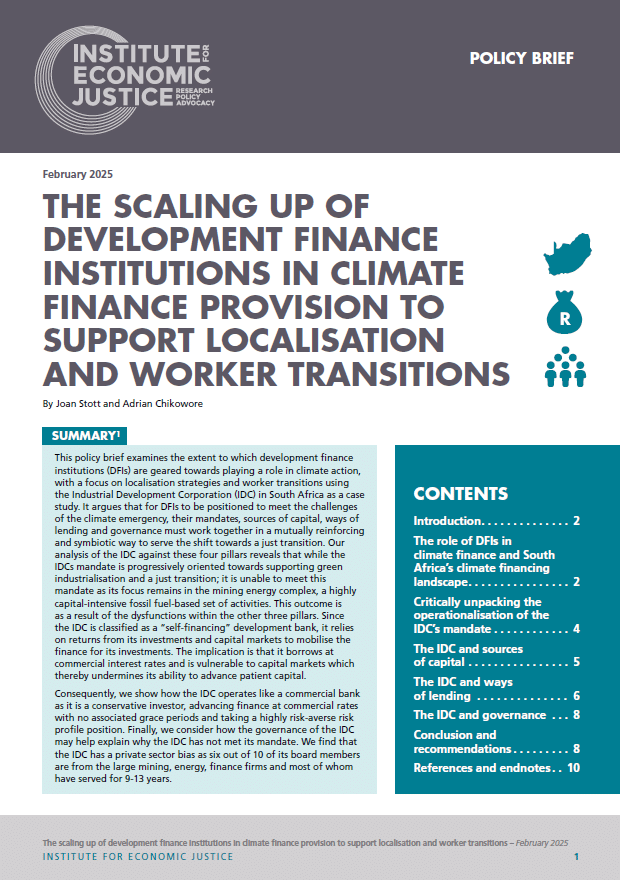The urgency of addressing climate change has placed Development Finance Institutions (DFIs) at the forefront of climate finance mobilisation. These institutions are uniquely positioned to drive sustainable development by funding renewable energy projects, climate resilience initiatives, and green industrialisation. However, for DFIs to meet the demands of the climate emergency, their mandates, governance, and financing mechanisms must align with the goals of a just transition.
This policy brief explores how DFIs, particularly South Africa’s Industrial Development Corporation (IDC), can enhance their role in climate finance mobilisation to support localisation strategies and worker transitions. By analysing the IDC’s operations, we identify key challenges and propose actionable recommendations to strengthen its capacity to drive equitable and sustainable climate action.
The Role of DFIs in Climate Finance
DFIs are critical players in climate finance mobilisation, bridging the gap between public and private funding. However, current financing levels fall short of global needs. For instance, South Africa requires between R334 billion and R535 billion annually to meet its climate goals, yet only R131 billion was mobilised on average between 2019 and 2021. DFIs contributed just 7.6% of this total, highlighting the need for reform.
The IDC, as a key DFI in South Africa, faces significant challenges in aligning its operations with climate goals. Despite a mandate to support green industrialisation, its portfolio remains heavily skewed toward carbon-intensive sectors like mining and energy. This misalignment stems from its reliance on commercial financing, conservative lending practices, and governance structures that prioritise private sector interests.
Key Challenges in Climate Finance Mobilisation
- Capital Constraints: The IDC’s self-financing model makes it vulnerable to capital market fluctuations, limiting its ability to provide patient capital for long-term climate projects.
- Conservative Lending: High interest rates and short repayment periods discourage investments in green transitions, which require extended timelines and concessional financing.
- Governance Gaps: The IDC’s board lacks representation from civil society and workers, skewing decision-making toward traditional, high-carbon industries.
Recommendations for Strengthening Climate Finance Mobilisation
To enhance the IDC’s role in climate finance mobilisation, we propose the following reforms:
- Recapitalisation:
- Inject up to R100 billion in fiscal support and leverage monetary policy initiatives to raise an additional R180 billion.
- Provide guarantees for loans exceeding 10-15 years to support long-term climate projects.
- Concessional Lending:
- Offer loans at 2% below prime with grace periods of at least five years.
- Adjust risk ratios to enable investments in socially impactful, long-term projects.
- Governance Reforms:
- Diversify the board to include representatives from civil society, workers, and green industries.
- Improve transparency by aligning reporting with the Green Finance Taxonomy and making policies publicly available.
Conclusion
As global climate finance discussions evolve, South Africa must ensure its domestic institutions are equipped to meet the demands of a just transition. By reforming the IDC’s financing mechanisms and governance structures, the country can enhance its climate finance mobilisation efforts, fostering a sustainable and equitable green economy. These reforms not only address local challenges but also provide valuable lessons for other nations striving to achieve their climate goals.

